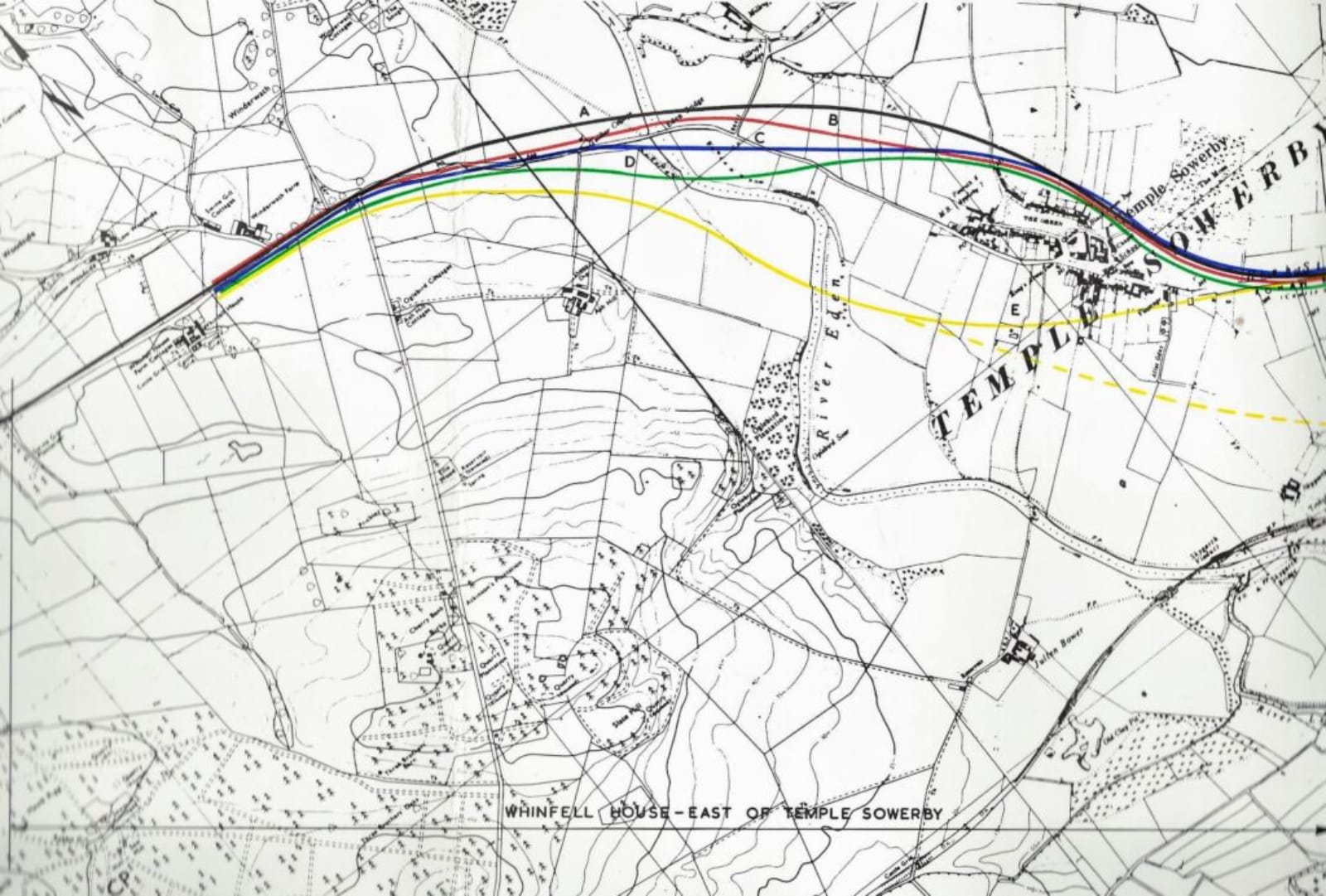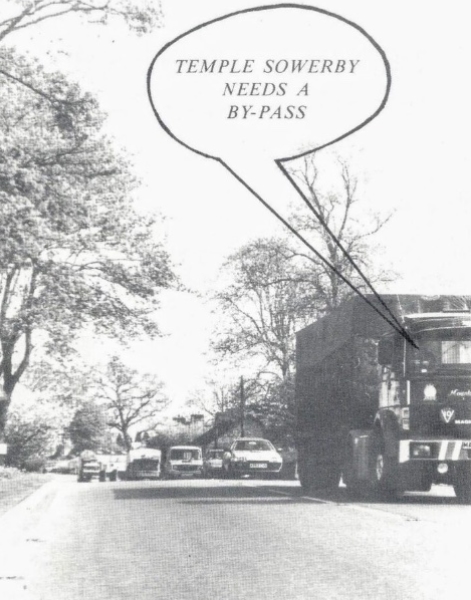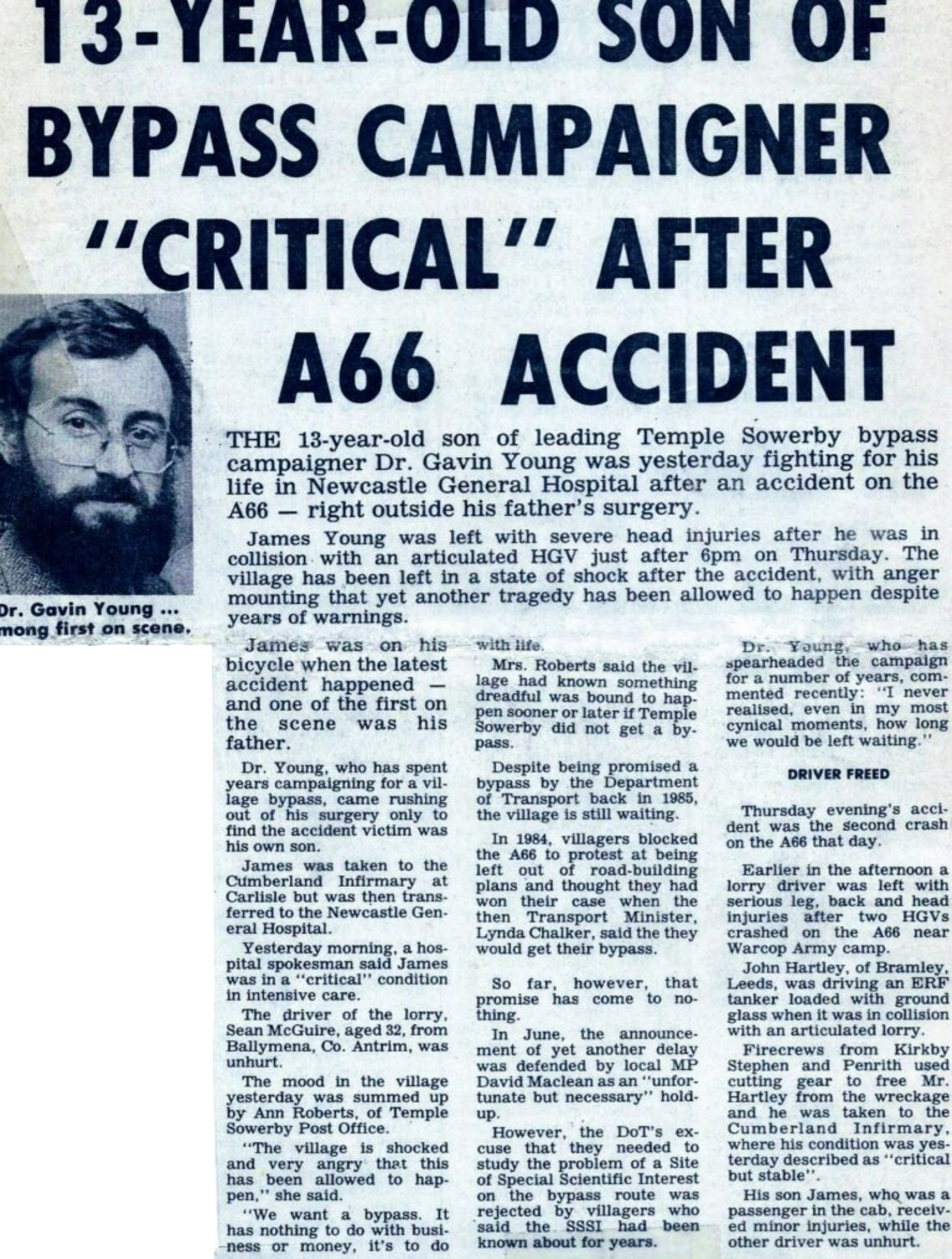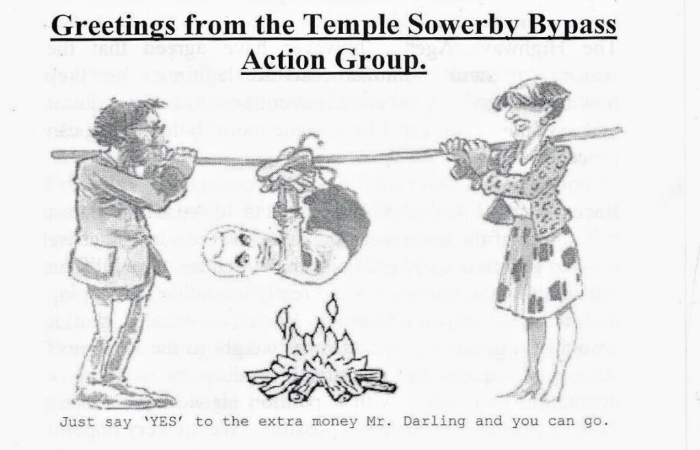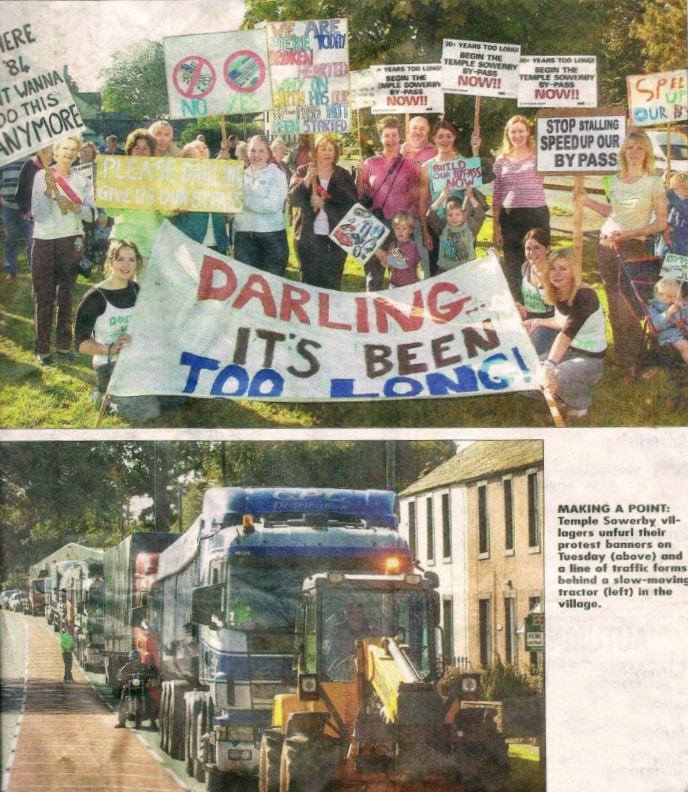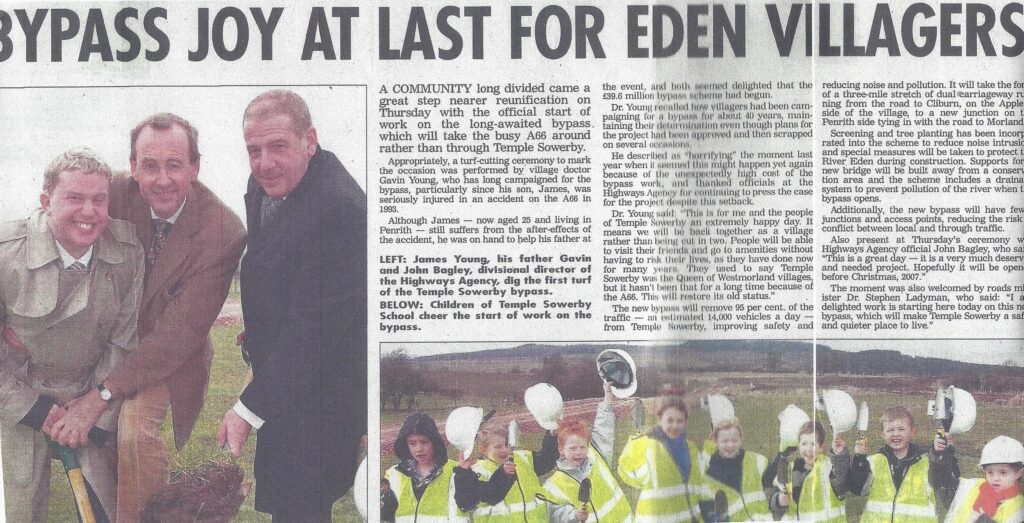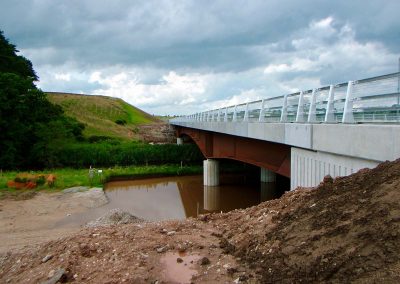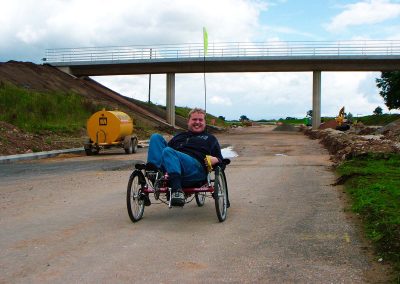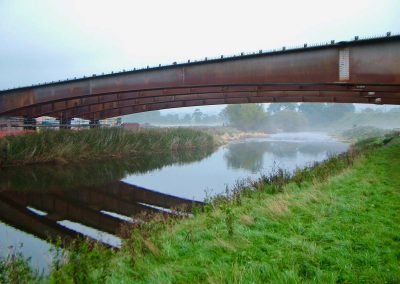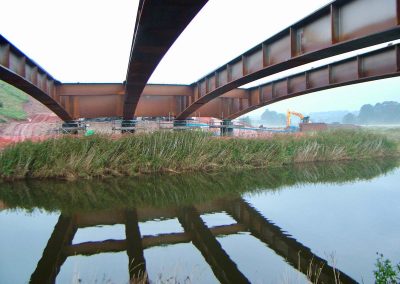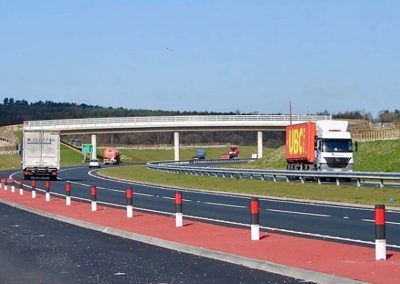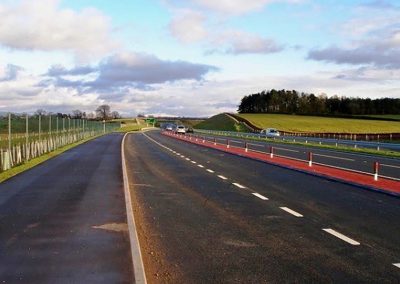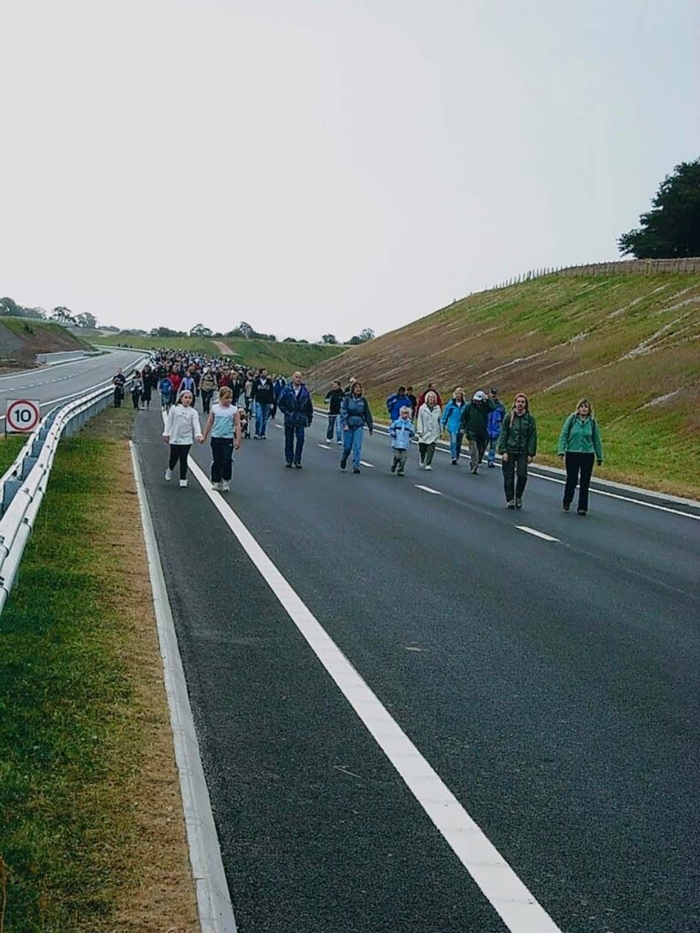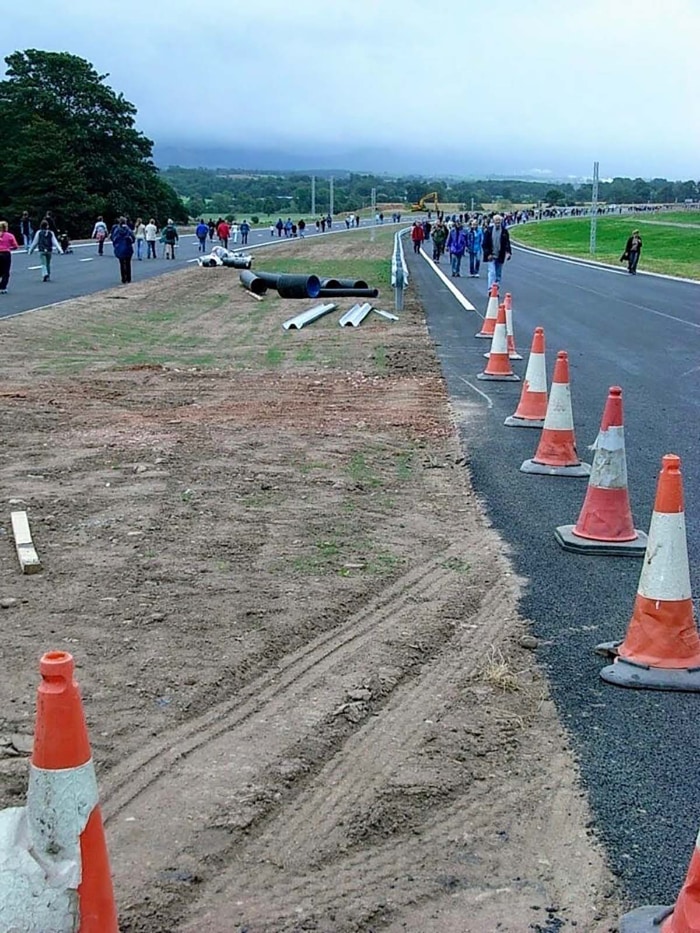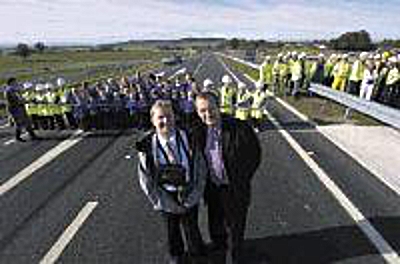The Story of the Temple Sowerby Bypass
Below is a personal account of the long campaign for the Temple Sowerby A66 Bypass, written by Gavin Young.
Background
When I moved into Temple Sowerby as a doctor to join Dr Donald Ainscow in January 1981 there was an expectation that work on the bypass would soon begin. There had been a press announcement on 23 June 1971 by the Secretary of State announcing improvements to the A66 Scotch Corner – Penrith trunk road. This was followed in August 1974 by the publication of a consultation document by the Department of the Environment giving alternative routes for bypassing Temple Sowerby and Kirkby Thore. This document showed five possible routes: four which took the road to the north of the village and one to the south. All the routes had a continuation to the south of Kirkby Thore. See map below.
Hopes were not high however, because when the Department of Transport published “Policy for roads: England 1980”, on page 52 the bypass was listed among “other schemes: on which preparation work will be temporarily suspended and resumed at a suitable point when there is a prospect of fitting them in.” Worse was to follow. In 1982 Cumbria County Council tried to close the village school but after a show of great resistance on the part of the village the council relented. The next blow was the publication in September by the Department of Transport of “Policy for Roads in England: 1983”. This document, in effect, showed that the proposed bypass had been cancelled and was listed in “schemes replaced in the national trunk road programme by new proposals”. These new proposals were not specified but were stated to be “smaller improvements such as at River Eden Bridge”.
There was massive anger in the village and a deep sense of betrayal, but all this was very motivating and almost immediately led to an Action Committee being formed. We invited Kirkby Thore to join with us but sadly that village felt the situation was hopeless and did not join our campaign. I cannot help wondering many years later whether that is why we got a bypass in 2007 and Kirkby Thore (whose need was as great) did not. Little did anyone on our committee imagine for one awful moment that it would be another quarter of a century before the bypass opened. Here is the story of our campaign.
The Early Skirmishes
The founding members of the committee were : Michael Cleasby, Raymond Dodd, Peter Lattin, Richard Malkin, Brian Nicholson, Ian Stout, Gavin Young. We were soon joined by Margaret Walker (now Davey). I was chosen to Chair the action group and was happy to do so. Our house at Eden Croft lay beside the main road. By the autumn of 1983 we had two boys aged three and two and a third child expected in May. This was motivation enough but the village had been shocked by a pedestrian being knocked down and killed in December 1982 on the A66 in the middle of the village. Our opening salvo was a letter written by the committee to Mrs Lynda Chalker, Minister of State for Transport. This letter stated “… one of the Department of Transport’s greatest priorities… Removing heavy vehicles from areas where people live shop and work. We are at a loss to understand how therefore we are not to be bypassed. We are (with the adjacent Kirkby Thore) the only villages on this trunk road from Scotch Corner to Penrith to remain without a bypass”.
On bank holiday Monday, 23 April 1984 we staged a public protest by repeatedly walking across the road carrying banners. Initial enquiries made to the police had suggested that our actions would be considered illegal, but in the event we were provided with police protection and all went well. We held up traffic for only a minute or two at a time and the response from most of the public was very supportive.
We sent letters to anyone we believed might have influence including all local MPs, members of the House of Lords, County Councillors, the Chief Constable and transport companies. The results were largely disappointing though some figures stood out. Viscount Rochdale of Lingholm, tabled a question in the House of Lords on 2nd May 1984 asking Her Majesty’s Government why the planned bypass had been scrapped.
By coincidence the Action Committee had arranged a 24 hour traffic census ending the day before. The Transport Department’s census was 6000 vehicles on Monday 29th April 1980. Our census was 7532 vehicles on Monday 30th April 1984. An increase of over 25% in just 4 years.
A large banner was placed across the road “WE NEED A BYPASS”. We were asked by the council to remove the banner, but we were quite unable to find who had put it up! We made a video and had 150 copies of a booklet published.
In the summer, through the help of our MP, David Maclean, four members of the committee travelled down to Westminster for a face to face meeting with Lynda Chalker, Transport Minister, showing her our video and booklet. This appeared to have made an impact in that we received a letter from GA Emmerson at the Transport Department Regional Office, “as a result of your meeting with the Minister, Cumbria County Council has been instructed to prepare, as quickly as possible, a detailed appraisal framework for the short northern bypass.”
The Lean Years 1984 – 1993
Hopes were raised in 1986 by a letter from the Department of the Environment and Transport “work on the bypass is programmed to start in the summer of 1991”. (In the event this was out by 15 years!) By February 1989 things were looking grim. Peter Bottomley Minister at that time wrote to David Maclean “none of the routes identified so far would provide an economic return on the capital cost of the scheme”. This led to further dismay but again was motivating.
We did another census on Monday 8th May 1989 for 24 hours. This was a comparative date to our census of 1984. Over 24 hours 8th-9th May 1989 a total of 10,514 vehicles passed through the village. This huge increase of 40% in just five years surprised even village residents, furthermore, 30% of the total was made up of heavy goods vehicles or buses and coaches – an unusually high figure even for an important trunk road. We informed the Department and in February 1990 the Minister, Robert Atkins announced that the bypass was back in the trunk road scheme with an estimated cost of £3.8m. Cumbria County Council put in a lot of effort trying to persuade the Department to upgrade all of the A66 to dual carriageway including our proposed bypass. (30 years later there are still long stretches of single carriageway on the A66).
In 1991 – another disappointment and another minister – this time Christopher Chope “I am very sorry to say that the information I gave you in July 1990 has proved to be optimistic… Preparatory work has taken longer than expected”. At this point the patience of most of the village and particularly those on the action committee was exhausted and this was exacerbated by the now lukewarm support from David Maclean who, I suspect, was beginning to lose enthusiasm for approaching ministers in his own government with our endless questions. He had initially been very supportive. We were then assured that there would be a public consultation in the spring of 1993 but then in May 1993 we were not surprised to hear from the Department that “unfortunately this has not been met for a number of reasons”. Public consultation was put off until the autumn.
Among the more ridiculous causes for further delay was that someone in the Department had only just realised that to the North East of the village lay a Site Of Special Scientific Interest (SSSI) which meant that any northern route for the bypass was out. Temple Sowerby Moss had been first notified as an SSSI in 1954 –almost 40 years earlier. It seemed that the right hand of government had no idea what the left was doing. Though the Moss is not unique, it is rare in being rich in nutrients rather than an acidic bog and is home to some unusual invertebrates including a water beetle, very rare out of Scotland: Laccornis oblongus. Either the Department was remarkably incompetent or it was using this as yet another excuse for delay.
1993-2000: Tragedy and then Light at the End of the Tunnel
On August 12, 1993 my eldest child James then aged 13 and was knocked off his bicycle by a lorry outside our house – not the lorry driver’s fault. James sustained a severe brain injury which left him with severe spasticity down his left side, significant intellectual impairment and profound deafness though this last has been helped by a cochlea implant. Needless to say this tragic accident aroused a lot of press interest.
As the weeks went by James gradually regained consciousness and there were further glimmers of hope with the road, as the Department held a public consultation in the village on 30th September 1993 showing the proposed route to the south of the village. This was to be 4.9km long and the cost had now risen to just over £10m. I believe the Department had little choice about the route, but the choice angered one villager sufficiently that he put a brick through our kitchen window. This was hard to take with James still very ill in Newcastle General Hospital. Though the Crown Prosecution Service was hesitant about proceeding the case, I was not, and the writer of the message was later found guilty in Appleby Magistrates Court.
Though we had a route we did not have a bypass and indeed we found in 1995 that we were in “priority 2 category “ with no start date provided . Many more letters flowed between the action committee and the Department. A disheartening letter from David Maclean 27.4.1995 told us that “the case for Temple Sowerby bypass has always been marginal” and that “there is no national interest in Temple Sowerby bypass”. This last was not true as we had had letters of support from the Road Haulage Association and many transport companies. Mr Maclean also stated “I am the only person at Westminster who is interested in arguing for this bypass”. This was not true as we had significant help from members of the House of Lords – in particular Lord Hothfield but also Lord Glenamara, Lord Jopling, the Lord Bishop of Carlisle and Lord Henderson all of whom lived locally and knew the A 66 only too well. I had to overcome my left-wing views and recognise that we now were receiving more support from unelected Lords than from our elected representative. Mr Maclean did though continue to write letters on our behalf to an ever changing stream of Ministers for Transport who continued to reply with endless reasons for prevarication- eg reviews, public consultations, more White Papers. By 1997 for the first time the action committee had a Labour government to deal with.
Lord Hothfield asked further questions in the House of Lords and in April 1998 had a face to face meeting with the minister Baroness Hayman.
2000 – A New Millennium and New Hope
The millennium began well with the publication of an extensive “Environmental Scoping Report” by Scott Wilson (Scotland) Ltd. This was a very wide ranging document examining the impact of the bypass on the village and its surroundings looking at positives and negatives. We began to feel that at last someone out there understood just how awful it was to have the A66 was running right through our village. However, yet another two years passed before there were any developments, but the next one was cause for great rejoicing. The Transport Minister, John Spellar announced on 10 April 2002 that the bypass had been put into the government’s “Targeted Programme of Improvements and work is expected to start in 2004/5”. The Highways Agency put on a public exhibition in the village hall in June 2002.
In December 2002, a “pre-Inquiry meeting” was held at the Tufton Arms Hotel in Appleby which in turn led to the full Public Inquiry at the same venue in March 2003. The Highways Agency put the case for the bypass very well and several people from the village were invited to speak myself included. Mercifully there were very few objections and most of these concerned minor alterations in the plans – one such being the Highways Agency not planning an underpass behind Croft Place to allow the footpath to continue to the River Eden. Happily the Inquiry Inspector, Mr D Sleath, recommended that the bypass should go ahead and that the Highways Agency should build an underpass. His report was sent to Alistair Darling, Secretary of State for Transport. Great rejoicing!
We should have known better than to let the excitement get the better of us. The next delay was because the cost of the 4.9 km bypass had risen steeply and there was doubt that funding could be found. This grim news stirred us to further action and a rejuvenated “Temple Sowerby Bypass Action Group” was re-formed: Peter Dawson, Bev Ferry, Steve Ferry, Elspeth Godwin, Barbara Key, John Key, Ken Ogden, Chris Starr, Helen Starr, Caryl Varty, Gavin Young.
On Tuesday, 1 September 2004 we blocked the road again. Many of those present had been there doing the same thing 20 years before. There was huge support within the village. About 170 of us crossed and re-crossed the road and several farmers helped by driving their tractors to slow the traffic for us. We only held traffic up for a minute or two each time and police were on hand to make sure no trouble erupted. The response of most of the drivers was very positive. The sun shone as it had done 20 years before and despite the anger felt by most of us there was also a party spirit that day.
We will never know what impact our campaign had but the village got an early Christmas present when the Highways Agency announced in early December 2004 that funding had been approved, the cost now being £23 million (it would in the end would cost nearer £40 million)
2006 Work Begins
Skanska were appointed to build the bypass. On Thursday 16th March 2006 on a cold blustery day the children from the school watched as the first sod was cut. The Highways Agency very kindly invited James to do this.
Work included construction of 4.9 kilometres of dual carriageway, tapering at either end to tie-in to the existing A66 trunk road, junctions at both ends of the bypass to access Temple Sowerby and other villages, new bridges and an underpass. Perhaps the most impressive aspect was the placing of massive sections of steel making the new bridge that was to carry the dual carriageway over the River Eden near Oglebird Scar (Red Rock). The design for this new bridge takes a single span across the river and the floodplain.
By the autumn 2007 work was almost finished and ahead of schedule. The whole village was invited to walk the 4 mile route on Sunday 16th September just weeks before the bypass was to open to traffic. Over 600 local people participated in the walk. There were all ages present, some children ran the route, while others took a more leisurely approach rejoicing that at long last there was a cause for celebration. It is a day many still remember with much pleasure.
After only 19 months in construction, on Thursday 18th October 2007, Archie Robertson Chief Executive of the Highways Agency arrives to cut the tape and hands the scissors to James.
The Bypass is Open!
And Now
For anyone who arrived in the village after 2007, or for those who have forgotten what life was like before the bypass, on a Monday morning or Friday at about 5pm, walk down the track beside the bowling green past Acton Lodge to the footbridge over the bypass. Look down on all the traffic thundering past and then imagine it all back in the village.
Temple Sowerby, which was once divided has now been unified and returned to being a peaceful, tranquil village.
Gavin Young, Temple Sowerby February 2020
